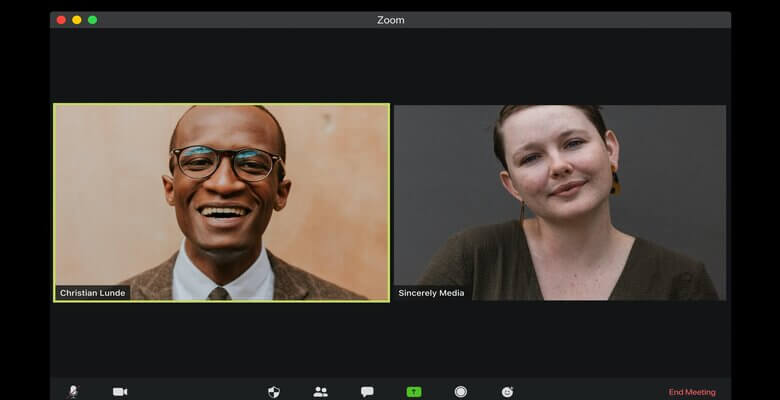By
Vicki Brackett
|
Date Published: March 07, 2022 - Last Updated March 07, 2022
|
Comments
 Most leaders understand that leading in a virtual or hybrid environment is different than in a brick-and-mortar environment. But how many leaders actually change their strategies and skillsets in a remote or hybrid environment to keep their teams engaged, productive, and performing?
Most leaders understand that leading in a virtual or hybrid environment is different than in a brick-and-mortar environment. But how many leaders actually change their strategies and skillsets in a remote or hybrid environment to keep their teams engaged, productive, and performing?
Changing how we lead is difficult for most leaders in the best of times. As the current business climate continues to evolve, it takes a concentrated effort to make personal changes in our strategy and leadership skillsets. Brave leaders will do some self-reflection, look at the options, and adopt a new, customized way of leading their organizations. For some, the health of their companies and their own jobs depend on this kind of adaptation.
Communication on Steroids – What Does That Mean Exactly?
We know that leaders must communicate effectively, but in a hybrid and 100% virtual world, communication takes on a whole new meaning. Successful leaders must learn how to emulate the brick-and-mortar feeling of communication inside their new or evolving work-at-home and hybrid organizations.
Communication feedback loops are best practices, and have become essential to the overall communication strategy. Great leaders understand that communicating their thoughts or describing a current challenge that they or the organization are facing is important.
Video is best. Candid video is even better. We all have cell phones and have seen countless videos on social media. With a selfie stick or a small smartphone desktop tripod (both under $20 each), leaders can easily make a two-minute video. Employees respect and will follow a leader who is authentic and direct. Post the video on the company intranet, internal discussion board, or chat rooms.
When leaders are in the brick-and-mortar office and meet someone in the hallway, there is an exchange of information. There is a feeling associated with that communication exchange. As a remote leader, it’s important to emulate that same type of exchange and feeling of being heard for employees. Asking for feedback in that video is the first part of the communication feedback loop. This emulates the brick-and-mortar feeling inside a work-at-home or hybrid organization.
Once there is feedback, another video can be created, highlighting a couple of the shared suggestions. A leader can ask a follow-up question and then post that video back out to the company intranet, internal discussion board, or chat rooms to get some additional feedback. Then another video is created.
This ongoing process keeps employees engaged, minimizes negative gossip, and increases the positive talk around the virtual floor. This gets people excited. If leadership is listening to them and they know what’s going on, doesn’t that give people a reason to stay and be part of the solution instead of leaving and going somewhere else?
Guarantee Your Communication Will Spread Like Wildfire
One of the obvious challenges in virtual communication is that we can’t see facial expressions and body language. In this environment, when we don’t communicate with people consistently, their brains start imagining things. That can start negative gossip which takes people away from being productive. In turn, this fosters a negative environment, which is a sure way to inspire people to leave their jobs.
To help combat this, a leader can try a split-level praise call by picking up the phone and calling someone one or two levels below them on the corporate organizational chart. The leader can pick someone that they saw on the discussion board or send an email to one of their direct reports asking them for two people in their organization who are doing a great job and what they did. When the leader picks up the phone to do a split-level praise call, the person may not pick up the phone if they don’t recognize the phone number, but that’s okay. The leader can leave a voice message explaining who they are, offer the praise, and then close with something positive like, “Keep up the good work.”
When someone listens to the message, the leader is automatically fostering action because that employee will text, email, or call a coworker and tell them about the voice message. Now a leader’s one call has impacted more people. In a virtual environment, this can spread like wildfire and cause others to do something great in the hopes that they, too, will be recognized. With one or two of those calls a day, a leader’s five to ten messages of calls per week will affect fifty or more people.
Controlling the Narrative
A leader’s actions suggest certain leadership characteristics to their organization—either right or wrong—whether deliberate or not. In a 100% virtual environment, anything negative or perceived as negative can spread like wildfire. As a leader, why not embrace this phenomenon and try to control the narrative yourself?
People want to be heard and want to know what’s going on from the leader directly. Interactive town halls are a great way to engage employees and give them a reason to stay with an organization. Best practice is keeping the initial thoughts to ten minutes or less and then opening it up for questions. Any questions are allowed, even the ones that make a leader uncomfortable. This showcases that the leader is unafraid to answer anything. When leaders speak candidly and are fearless, people sit up and listen. This causes positive gossip long after the town hall ends.
By following the town hall up with a split-level praise call and a communication feedback loop, now a leader is consciously utilizing new work-at-home and hybrid environment strategies and leadership skills. This evolves a new culture that engages employees so they are happy and productive, perform better, and stay—and that drives success and profitable organizations.